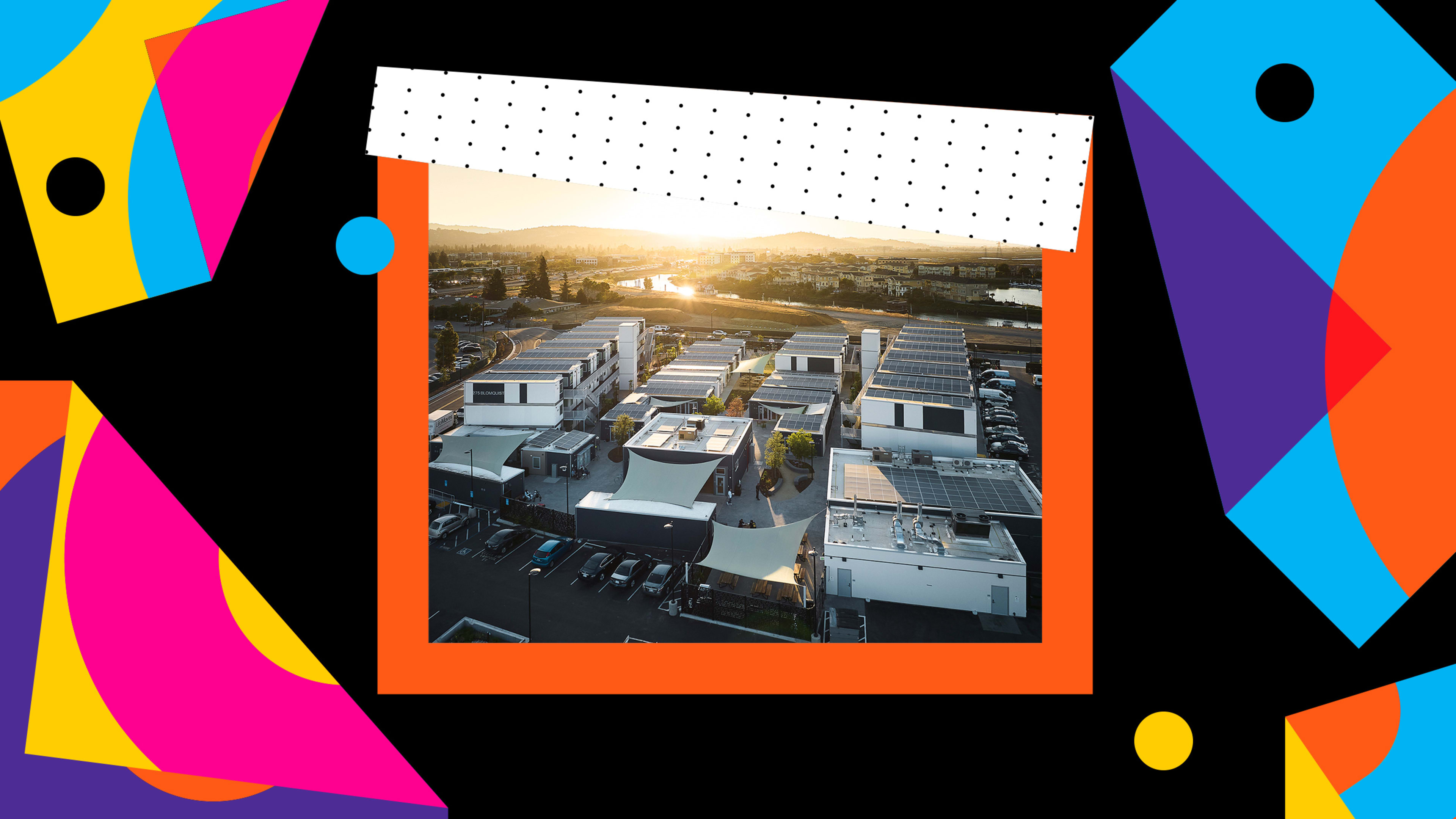Solving homelessness takes more than just homes. Along the way to stable housing, people experiencing houselessness often need a mix of social services, healthcare, job training, and the simple power of an interim place to transition out of life on the streets. A new type of supportive housing project, built with an innovative and replicable design approach, combines all these services in one place.
Step(1) Housing, winner of Fast Company’s World Changing Ideas Award for architecture, is a 260-person campus of both housing and services that takes advantage of the speed of modular building without sacrificing the comfort of residents.

Built for the County of San Mateo, in the San Francisco Bay Area, the facility combines secure and private housing, social services, job training, and, importantly, common and outdoor spaces that can ease the isolation of houselessness. The county refers to it as an interim supportive housing system, where residents typically stay between three and six months as they transition to permanent housing.
The campus was designed by the Office of Charles F. Bloszies, a San Francisco-based architecture firm, and it is laid out to mimic an open hand. Residential buildings are splayed out like fingers, with common areas in between and a piazza-like gathering place at the palm. The housing units themselves are individual rooms, many with en suite bathrooms. Rising up to three stories tall, they’re closer to conventional apartment buildings than the typical shelters used in places with extreme homelessness.
“A lot of the tiny homes that you’ve seen are these prefabricated sheds. They kind of look like a camp, just cleaned up a little. They still have the stigma of being something that is not just normal housing, and that’s what we tried to avoid with this concept,” Bloszies says. “The idea was to make them look like a real building rather than a collection of modules.”
The modular units are all constructed in a factory and assembled together on site. In total, the project took only about six months to build. Bloszies says the units are robust enough to be reconfigured and expanded upon or disassembled and redeployed in another location. Inside, the units are compact but precisely designed, and they are all compliant with the Americans with Disabilities Act. Bloszies compares them to ship cabins.

The housing is also designed to foster interaction outside each unit’s walls. Social spaces link the campus together and encourage residents to seek out the services and training available there. Bloszies calls the approach simple, and one that tries hard to make the transition from houselessness smooth and successful. “We wanted it to be innovative, but not experimental,” he says.
A second project has already been built, and two more are currently under construction. “The idea is getting some traction,” Bloszies says. “I think it can work anywhere.”
Explore the full list of Fast Company’s World Changing Ideas, 281 projects that are making the world more accessible, equitable, and sustainable for everyone. We’ve selected the companies, organizations, and nonprofits making the biggest impact across 50 categories, including architecture, energy, finance, transportation, and more.
Recognize your brand’s excellence by applying to this year’s Brands That Matter Awards before the final deadline, June 7.
Sign up for Brands That Matter notifications here.
